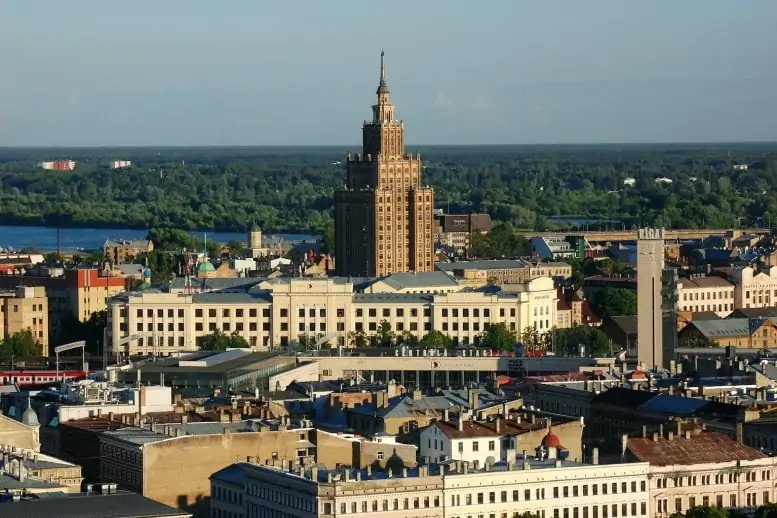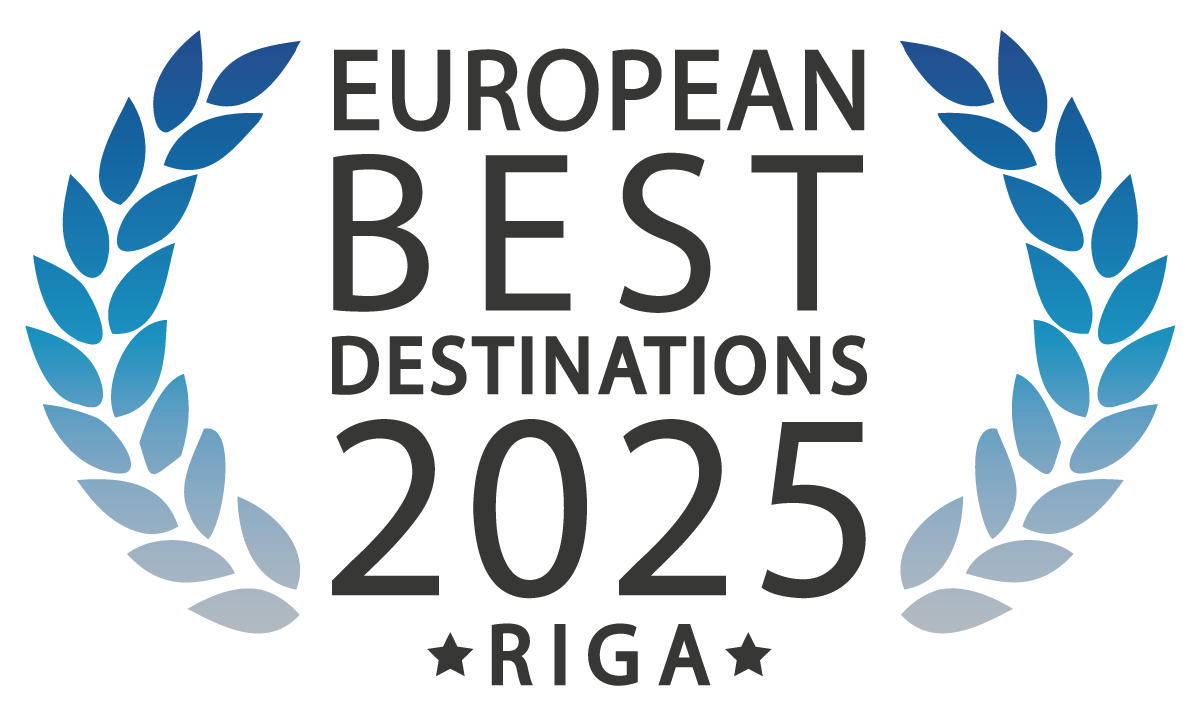
The Latvian Academy of Sciences building is one of Riga’s most distinctive silhouettes. Completed in 1961, it rises to 108 meters and was the tallest structure in Latvia for many years. Built in the Socialist Classicism style and sometimes nicknamed “Stalin’s birthday cake,” it reflects the architectural trends of the era but also incorporates local folk motifs into its design. For Riga’s residents, it became a new marker on the city’s skyline - imposing, controversial, but undeniably symbolic of a period in the 20th-century history of Latvia.
The institution it houses has a longer and more layered history. While the building is rooted in the Soviet period, the Academy itself carries forward traditions of Latvian scholarship that stretch back to the 19th century. Today, it continues to serve as the country’s central body for science, uniting academics, supporting research, and representing Latvia in international scientific networks.
Latvian Academy of Sciences observation deck
One of the biggest draws of the Academy building today is its open-air observation deck. Located on the 17th floor, about 65 meters above the city, it offers sweeping 360-degree views over Riga. From here, you can see the curve of the Daugava, the sprawl of the Central Market’s pavilions, the towers of Old Town, and even the National Library across the river. The deck is open daily, and visitors can reach it by elevator to the 15th floor, followed by a short climb up two flights of stairs.
Why visit
A visit to the Academy of Sciences combines two experiences in one: exploring one of Riga’s most recognizable high-rises and enjoying some of the best panoramic views in the city. For photographers, the deck provides striking angles of Riga’s historic core, while for travellers, it’s a chance to see how the old and new districts fit together. The building itself, with its unique architectural style, also gives insight into Latvia’s layered history - making it both a viewpoint and a cultural stop.
Historical highlight
When the building opened in the early 1960s, it quickly became a centre of activity, hosting conferences, lectures, and public events. Over the decades, it witnessed significant social changes: in the early 1990s, symbols of the Soviet era - such as the red star on its spire and portraits of Marx and Lenin inside - were removed, reflecting Latvia’s regained independence. Today, the structure stands less as a monument to a regime and more as a reminder of the city’s resilience and its evolving story.
How to get there
Located just a few minutes’ walk from Riga Central Station and the Central Market, the Academy of Sciences is easy to spot thanks to its tall spire. The area is well served by trams and buses, with stops nearby, and it’s also within walking distance of the Old Town.
